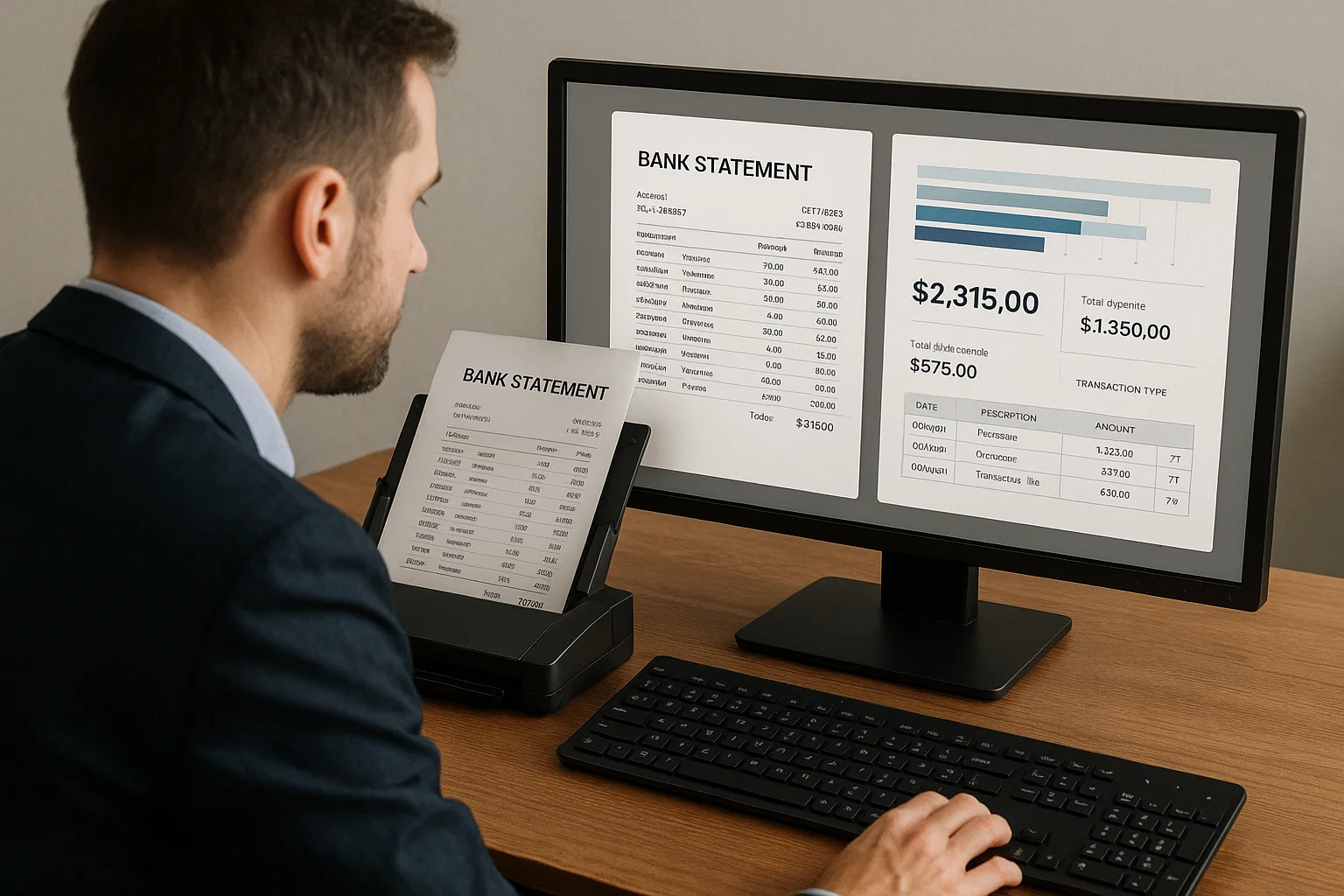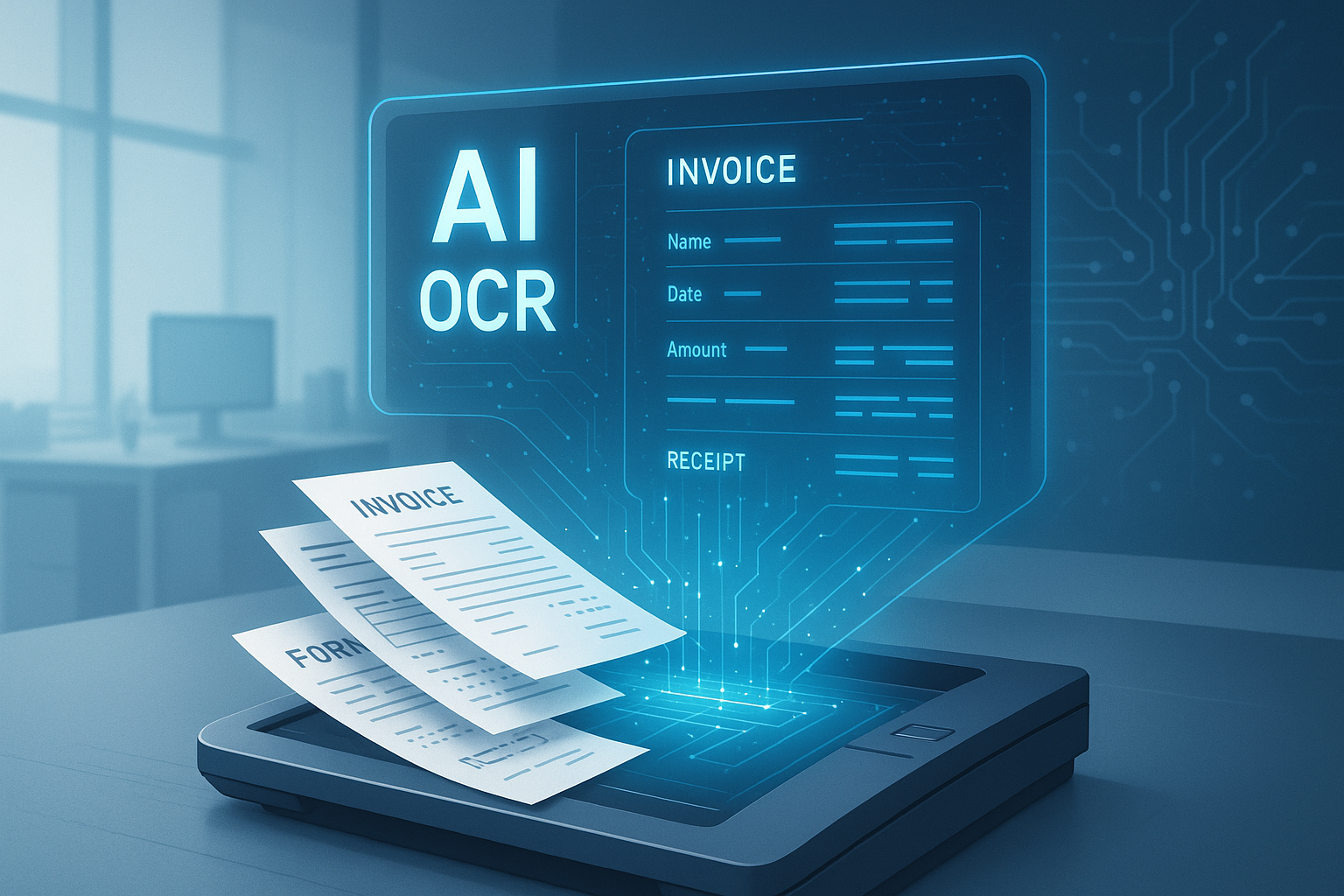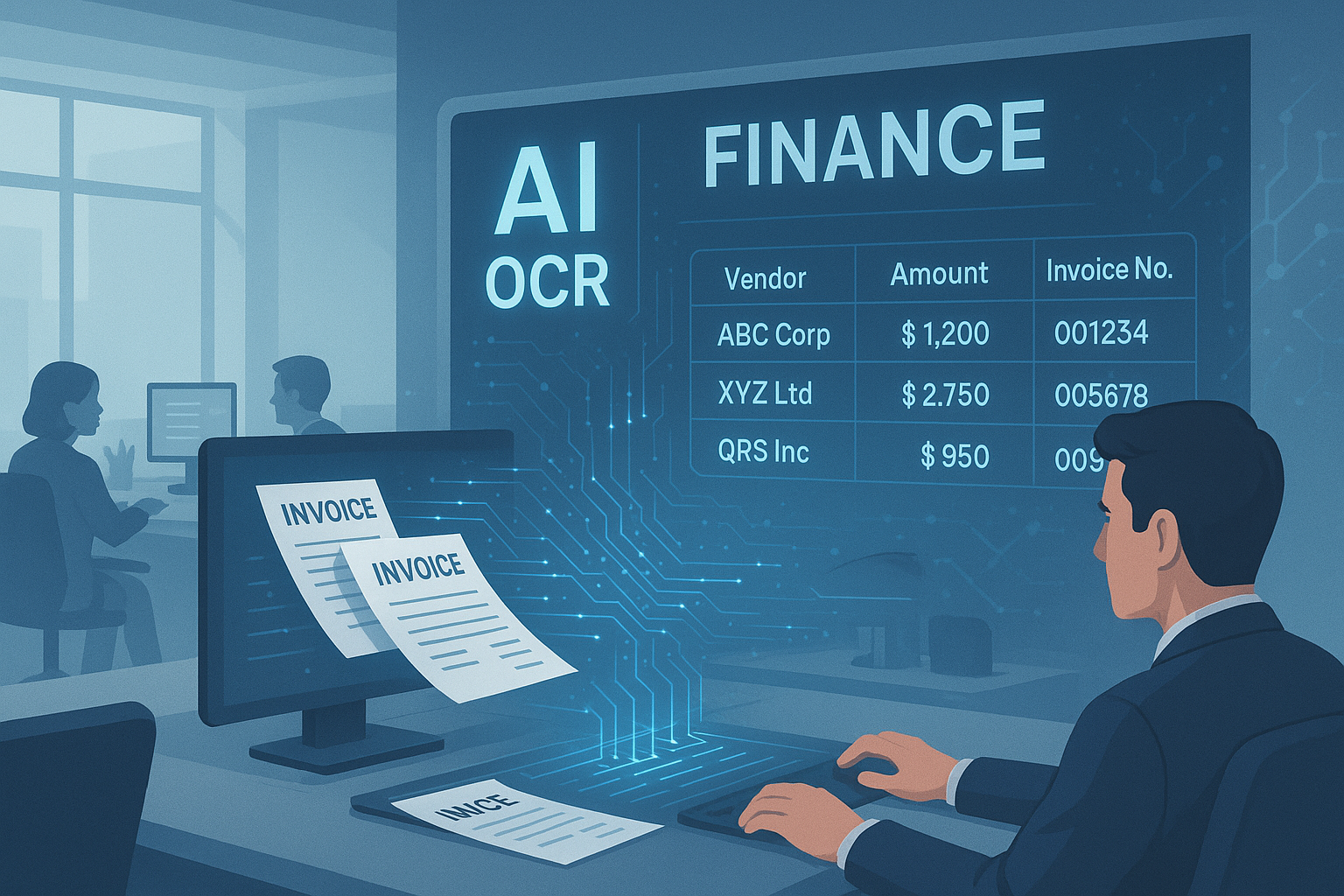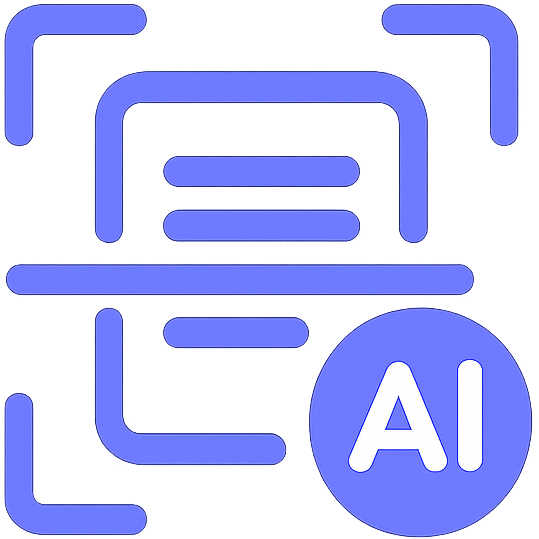OCR Bank Statement Technology: Revolutionizing Financial Data Processing
Discover how OCR bank statement technology is transforming financial data extraction, reducing manual workload, and improving accuracy for businesses and financial professionals.

Table of contents
Introduction to OCR Bank Statement Technology
In today's fast-paced financial environment, processing bank statements manually is not just tedious—it's a competitive disadvantage. Financial professionals, accountants, and business owners are increasingly turning to OCR bank statement technology to automate data extraction and streamline their workflows. This technological advancement is changing how organizations handle financial documents, offering significant time savings and reducing human error.
But what exactly is OCR bank statement technology, and why has it become so crucial for modern financial operations? This comprehensive guide explores the mechanics, benefits, and practical applications of bank statement OCR, helping you understand how this technology can transform your financial data processing.
What is OCR Bank Statement Technology?
OCR (Optical Character Recognition) bank statement technology refers to specialized software that automatically extracts and digitizes data from bank statements. Whether these statements are in PDF format, scanned paper documents, or even images captured by a smartphone, OCR technology identifies, captures, and converts the text into machine-readable, editable data.
Unlike generic OCR solutions, bank statement OCR is specifically designed to recognize and process financial information. It understands the unique structure of bank statements, identifying account numbers, transaction dates, descriptions, deposits, withdrawals, and balances with remarkable accuracy.
How Bank Statement OCR Works
Bank statement OCR operates through a sophisticated multi-step process:
- Document Capture: The system first ingests the bank statement through scanning, uploading, or direct integration with banking platforms.
- Image Pre-processing: The software enhances the image quality by adjusting contrast, removing noise, and correcting skew to improve recognition accuracy.
- Text Recognition: Advanced algorithms identify and extract text characters from the document, distinguishing between numbers, letters, and special characters.
- Data Structuring: The extracted information is organized into a structured format, recognizing column headers, transaction details, and statement totals.
- Data Validation: The system performs checks to ensure the extracted data is accurate, flagging potential errors for human review.
- Export and Integration: The processed data can be exported to accounting software, spreadsheets, or financial management systems.
Modern finance OCR software employs machine learning to continuously improve its accuracy. The more documents it processes, the better it becomes at recognizing various statement formats and handling exceptions.
Key Benefits of Bank Statement OCR Technology
Time and Resource Savings
Manual data entry from bank statements is extraordinarily time-consuming. Financial professionals can spend hours transferring information from statements into accounting systems or spreadsheets. Bank statement OCR technology reduces this process to minutes, freeing staff to focus on analysis and decision-making rather than data entry.
Enhanced Accuracy
Human error is inevitable during manual data entry, especially when dealing with lengthy statements containing hundreds of transactions. OCR technology significantly reduces these errors, providing consistent accuracy rates often exceeding 95%. This accuracy is crucial for financial reconciliation and reporting.
Improved Compliance and Audit Readiness
Bank statement OCR creates a standardized, searchable digital record of all financial transactions. This systematic approach supports compliance requirements and simplifies the audit process by making all financial data readily accessible and consistently formatted.
Cost Reduction
By automating bank statement processing, organizations can reduce labor costs associated with manual data entry. Additionally, the improved accuracy minimizes costly errors that might otherwise require extensive reconciliation efforts.
Practical Applications of Bank Statement OCR
Accounting and Bookkeeping
Accounting firms use bank statement OCR to automate client bookkeeping, reducing manual data entry and accelerating month-end closing processes. This automation allows accountants to handle more clients without increasing staff.
Loan Processing and Verification
Financial institutions employ bank statement OCR for loan underwriting, quickly extracting and analyzing applicants' financial history. This speeds up the verification process while maintaining thorough due diligence.
Expense Management
Businesses leverage OCR technology to automate expense tracking and reconciliation, matching transactions from bank statements with expense reports and invoices automatically.
Fraud Detection
Advanced bank statement OCR systems can identify unusual patterns or discrepancies in transaction data, flagging potential fraudulent activities for further investigation.
Choosing the Right Bank Statement OCR Software
When selecting OCR software for bank statement processing, consider these essential factors:
Accuracy and Recognition Capabilities
The primary consideration should be the software's accuracy in extracting data from various bank statement formats. Look for solutions with demonstrated high accuracy rates and the ability to handle different statement layouts.
Integration Options
Effective OCR solutions should seamlessly integrate with your existing financial systems, including accounting software, ERP systems, and data analysis tools.
Security Features
Since bank statements contain sensitive financial information, robust security measures are essential. Ensure the OCR solution offers encryption, secure data storage, and compliance with financial data protection regulations.
Scalability
As your organization grows, your OCR solution should scale accordingly. Choose software that can handle increasing volumes of statements without performance degradation.
Support and Training
Implementation success often depends on proper training and ongoing support. Select vendors that offer comprehensive onboarding and responsive technical assistance.
Implementation Best Practices
To maximize the benefits of bank statement OCR technology:
- Start with a pilot program focusing on statements from one or two financial institutions.
- Establish clear accuracy benchmarks and validation procedures.
- Train staff on how to handle exceptions and verification processes.
- Gradually expand to additional statement types and financial institutions.
- Regularly review and refine your OCR workflows to improve efficiency.
The Future of Bank Statement OCR
The evolution of bank statement OCR technology continues at a rapid pace. Emerging trends include:
- AI-enhanced contextual understanding, allowing systems to interpret transaction descriptions more accurately
- Real-time processing capabilities that extract data from statements as they become available
- Advanced analytics that provide insights based on historical transaction patterns
- Expanded mobile capabilities for on-the-go statement processing
As these technologies mature, the gap between manual and automated bank statement processing will widen, making OCR adoption increasingly essential for competitive financial operations.
Conclusion
OCR bank statement technology represents a significant advancement in financial data processing. By automating the extraction and digitization of bank statement data, organizations can achieve substantial time savings, improved accuracy, and enhanced financial visibility.
For financial professionals, business owners, and accountants, implementing bank statement OCR is no longer just a convenience—it's becoming a necessity in an increasingly digital financial landscape. As the technology continues to evolve, those who adopt these solutions will gain significant advantages in efficiency, accuracy, and financial insight.
Whether you're managing personal finances, running a small business, or overseeing financial operations for a large organization, bank statement OCR technology offers a powerful tool to streamline processes and focus more on analysis and strategy rather than data entry.
Related Blog Posts

Revolutionizing Document Management with OCR Technology
Explore how AI-powered OCR technology transforms document management by digitizing text, streamlining workflows, reducing errors, and boosting efficiency across industries.

Smarter Invoice Processing: The OCR Advantage for Finance Departments
Learn how OCR technology revolutionizes invoice processing for finance departments by automating data extraction from invoices, reducing costs, and boosting accuracy. This guide covers OCR's benefits, AI enhancements, and practical steps to transform accounts payable operations

OCR APIs: The Secret Weapon Smart Finance Teams Are Using Right Now
Discover how OCR APIs transform finance teams by automating data entry from receipts and invoices, cutting processing time by up to 85%, and boosting accuracy to 98%. This guide shares real-world insights for modernizing financial workflows.
Ready to Transform Your Lending Process?
See how DocsAPI's AI-powered industry classification can help you process loans faster, improve accuracy, and scale your operations.
